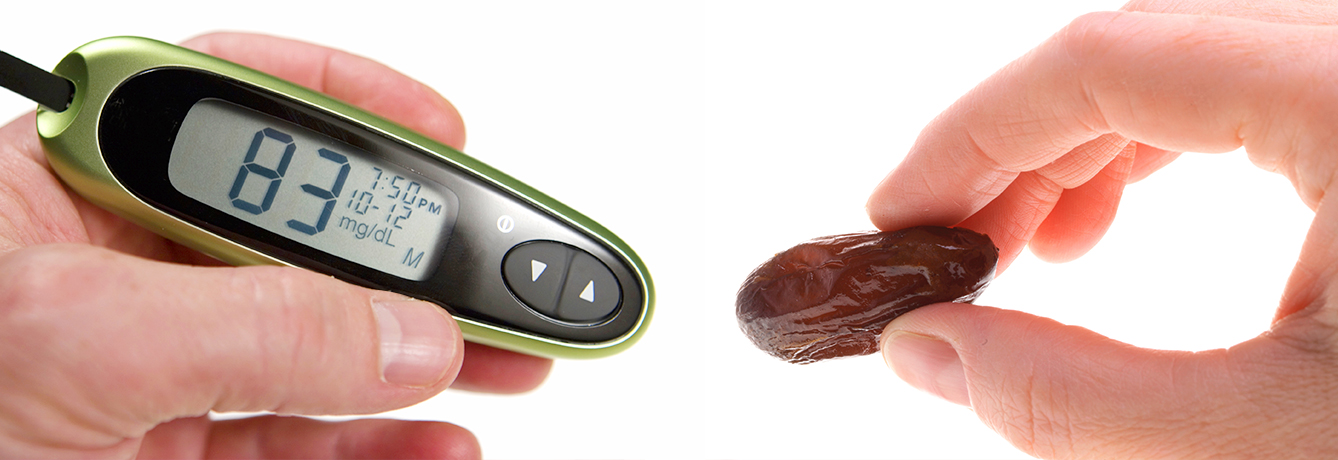March 27 is Diabetes Alert Day, a time to take the simple Diabetes Risk Test of the American Diabetes Association and reflect on the soaring numbers of type 2 diabetics. This distressing trend is fueled by America’s obesity epidemic, with diagnosed cases having increased 170% in the last decade alone. But it’s also an opportunity to refocus on prevention and care. Weight management is the most important factor in lowering the risk of diabetes and associated ailments such as heart disease, stroke, dementia, cancer and blindness. While fruits and veggies in general can help keep pounds at bay — science is singling out a particular food with potential benefit to diabetics: Dates.
Obviously more research is needed to explore whether such benefits would extend to humans, but meanwhile there’s plenty of reasons to dig dates: One cup chopped deglet noor dates provides 47% of your daily fiber, 12% of vitamin B6, 28% potassium, 19% manganese, 16% magnesium and 15% copper. While drying the fruit concentrates the energy, sweetness — and thus calories — those who snack on dried fruit daily have lower Body Mass Indices (BMIs), smaller waists and less body fat.



